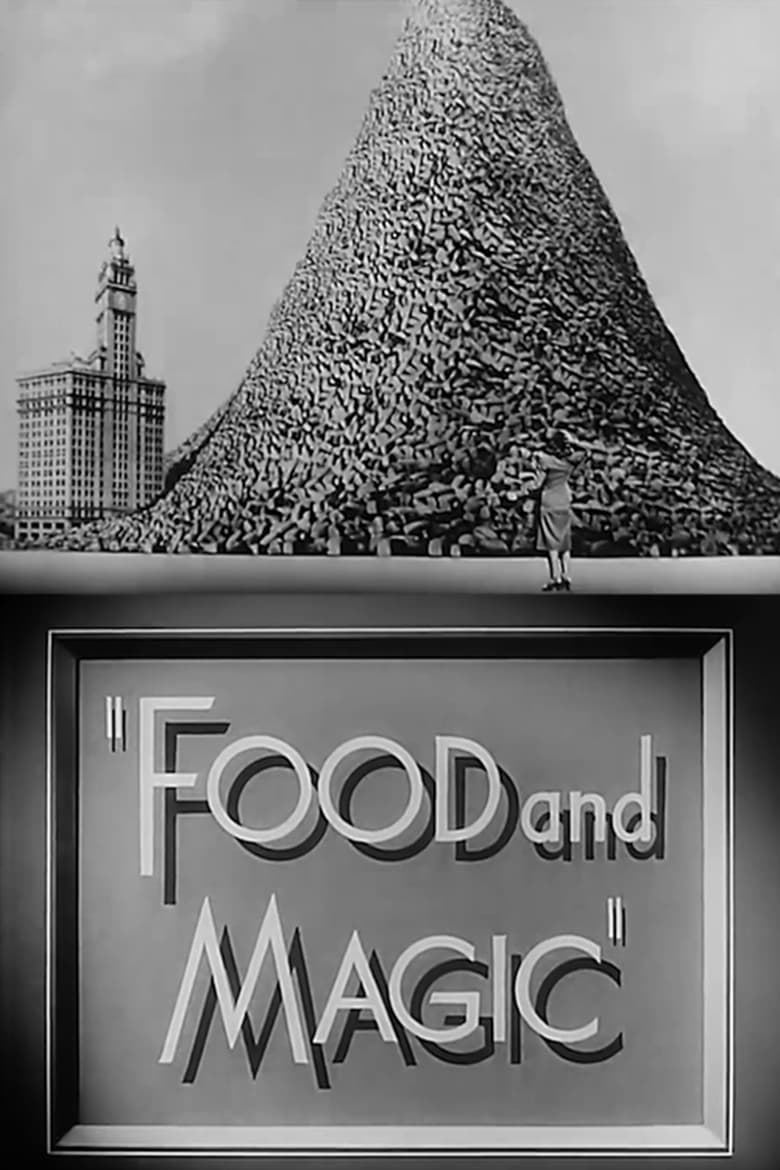

Food and Magic
Genres
Overview
A sideshow barker uses magic and visual aids to alert the public that proper food management is both a resource and a weapon that could be to America's advantage if conserved properly in winning the then current World War. Preserved by the Academy Film Archive, Academy War Film Collection, in 2008.
Details
Budget
$0
Revenue
$0
Runtime
10 min
Release Date
1943-11-18
Status
Released
Original Language
English
Vote Count
5
Vote Average
5
Jack Carson
Faye Emerson
Fred Kelsey
Bill Kennedy
Mark Stevens
Dink Trout
0.0
Henri Matisse
Documentary film about artist Henri Matisse
1946-04-16 | fr
10.0
Stories of Strength and Hope: Preventing Youth Suicide
An up-to-date look at Youth Suicide with an examination of the warning signs, statistics and causes, along with possible ways teachers and parents can use to help their child overcome this important social issue. Also includes a look at the media and its handling of the social issue through the Netflix series "13 Reasons Why" and the Tony Award-winning Broadway musical, "Dear Evan Hansen."
2018-05-16 | en
6.0
Fallas 37: el arte en guerra
In November 1936, a few months since the beginning of the Spanish Civil War, the government of the Second Republic moves to Valencia. In this situation, several Valencian artists and intellectuals decide to build four fallas — satirical plasterboard sculptures created to be burnt — to mock fascism.
2013-03-02 | es
0.0
Medic
Sentenced to community service, a privileged and self-consumed young woman encounters a war veteran at a soup kitchen and realizes that she has the potential to support him on his road to wellness, while doing the same for herself.
2016-05-01 | en
5.8
The Lost Letter
The Lost Letter tells the tale of a young boy as he prepares his neighbourhood for Christmas. That is until he confronts the one lady who doesn't want the holiday to come at all. The determined boy does all he can to bring colour to her dreary world, only to discover the truth behind her lack of Christmas spirit.
2016-07-01 | en
6.0
Frankenstein
Frankenstein, a young medical student, trying to create the perfect human being, instead creates a misshapen monster. Made ill by what he has done, Frankenstein is comforted by his fiancée; but on his wedding night he is visited by the monster.
1910-03-18 | en
7.2
The Impossible Voyage
Using every known means of transportation, several savants from the Geographic Society undertake a journey through the Alps to the Sun which finishes under the sea.
1904-11-10 | fr
6.5
The Cardinal
A young Catholic priest from Boston confronts bigotry, Nazism, and his own personal conflicts as he rises to the office of cardinal.
1963-12-12 | en
6.0
Alfonso Sánchez
Famous Spanish film critic Alfonso Sánchez talks about his personal life, his work and Anouk Aimée. A sentimental tribute to one of the most relevant figures on the Spanish film scene.
1980-01-01 | es
6.5
Snookles
A baby dragon and a little bird fail to make beautiful music together.
1986-01-01 | en
0.0
The Legend of Rurik
A Viking warrior fights a dragon in a volcano to avenge the destruction of his village and his wife’s death.
2016-09-01 | en
10.0
Or Bleu
Two coral harvesters brothers are about to finish their working day, when the elder one discovers a mysterious underwater cave.
2017-09-07 | fr
8.5
But I Saw You
A girl starts running in a different direction from everyone else. If you have friends who run with you, you'll find the courage to keep running.
2021-04-08 | ja
7.0
Who will die today?
This film ballad is dedicated to those who never returned home from WW2. A group of retreating Soviet soldiers, crossing a lunar terrain in a desperate attempt to escape death, is attacked by a German fighter plane that appears like a bolt from the blue. One by one they are killed. Then suddenly, in an unlikely denouement bordering on the mystical, the attacker is shot down with a simple rifle. For ideological reasons that defy understanding this film, one of Viktor Hres’ earliest works, was shelved in 1967 by Soviet censors. In 2010, it was restored by the Debut Studio of the Oleksander Dovzhenko Film Studio with the support of the Ministry of Culture and Tourism of Ukraine.
1967-06-14 | ru
5.0
Rodar en Cuba
Documentary - Short Film
2003-01-01 | es
7.6
Australia: Land Beyond Time
Australia: Land Beyond Time takes viewers on a breathtaking journey back in time to witness the birth and evolution of a mysterious land that harbors remnants of Earth's earliest life and many of it's strangest creatures that exist nowhere else on the planet.
2002-05-25 | en
5.8
Hurricane on the Bayou
The film "Hurricane on the Bayou" is about the wetlands of Louisiana before and after Hurricane Katrina.
2006-07-29 | en
0.0
M - Fantasia Dramática
2020-06-10 | pt
7.2
Destiny in Space
Travel alongside the astronauts as they deploy and repair the Hubble Space Telescope, soar above Venus and Mars, and find proof of new planets and the possibility of other life forming around distant stars.
1994-01-17 | en
6.5
Mission to Mir
This film shows how far we have come since the cold-war days of the 50s and 60s. Back then the Russians were our "enemies". And to them the Americans were their "enemies" who couldn't be trusted. Somewhere in all this a young girl in Oklahoma named Shannon set her sights on becoming one of those space explorers, even though she was told "girls can't do that." But she did.
1997-10-17 | en